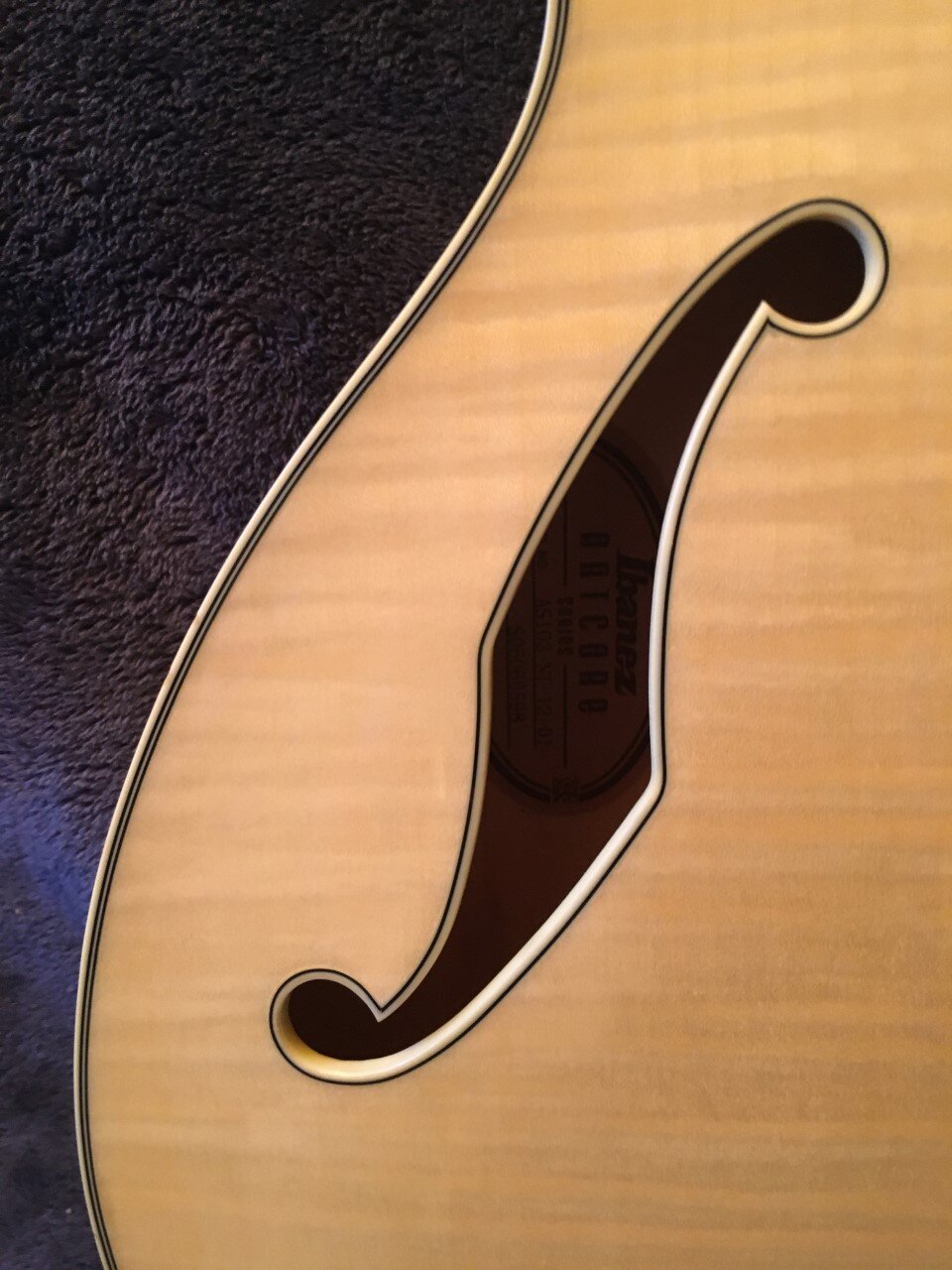Weird Fishes
There are three common types of cover songs, where a performer or band performs a song originally performed by another artist. The first type of cover is the near replica. In this kind of performance, the covering artists create a facsimile of the original version, without making significant changes or putting a personal spin on the material. Examples of this type of cover include Aerosmith’s version of the Beatles’ “Come Together,” Weezer’s recording of Toto’s “Africa,” and Lenny Kravitz’s take on The Guess Who’s “American Woman.” These cover versions are not perfect copies. The covers’ vocals are obviously different because the covers are sung by different vocalists. The guitar solos are not the same. There may even be a key change or two. But these covers are, for the most part, simply recreations of the original.
In my opinion, there are a few situations where a near replica is what’s called for. A band playing a wedding, for example. Chances are the bride, groom and assembled guests at a wedding are not interested in hearing a twenty-minute, spacey, psychedelic version of “Twist and Shout.” I mean, personally, if I was paying for the wedding and the band approached me with this idea, I’d give them the green light in a heartbeat. But if I was the wedding band’s manager and halfway decent at my job, I’d have to say no. Hells no in fact. Same near replica cover rules apply for a bar band. Covering a song and making it sound like the original equals decent bar band, which equals happy drunks.
Another situation where a near replica cover is an admirable goal, regardless of the skill level of the artist performing the cover, is when the original music is technically difficult material. Even for professional musicians, rendering a note-for-note performance of something originally performed by Yes or one of Frank Zappa’s bands is no joke. Covering such material accurately displays a high level of musicianship.
All of that said, a group of competent professional musicians releasing an official recording of another band’s or artist’s material, without significantly changing the material, is in my opinion a waste of time. Aerosmith can cover a straightforward Beatles’ tune? I would certainly hope so. What is your point Aerosmith? I have a similar reaction to Lenny Kravitz and his rendition of American Woman. Kravitz took “American Woman” and simplified it, as if “American Woman” was overly complicated. No more intro. No more distinctive lead guitar. Just the main riffs and some vocals, and a key change from E to C. Lenny Kravitz made “American Woman” boring. And then he made a video, with Heather Graham. And now Lenny’s version has seven times as many views on YouTube as The Guess Who original, and there are probably lots of folks under thirty who think Kravitz wrote the damn thing. ‘Merica indeed.
The second type of cover song is where the cover artist makes some significant musical changes while maintaining the spirit of the original. This strategy is far more interesting than creating a near replica and is probably the most common cover song strategy used by professional musicians, especially jazz musicians. There is a limit, where changes from the original key, tempo, instrumentation, and the like may result in a piece of music that is different enough from the original that the new creation may seem unrelated its origin. However, if some of the essence of the origninal is retained, the cover is still a cover, and it falls into the second category of covers. This second category can range from covers like Van Halen’s fiery take on the Kinks’ “You Really Got Me” (it is not a Van Halen song Google, it is a Kinks song) or Miles Davis’ landmark recording of “Someday My Prince Will Come,” to radical reworkings like Jimi Hendrix’s take on Dylan’s “All Along the Watchtower,” or John Coltrane’s expansive and explosive version of “My Favorite Things.” Jimi’s cover got Dylan’s stamp of approval. Trane is telling you about some of his favorite things. The essence of the original songs is still intact in all cases.
The third and final category of cover songs consist of performances which completely transform the meaning of the originals. One example of this type of cover song is Cake’s slogging, tongue in cheek, gloriously loose version of the Gloria Gaynor disco anthem of resilience “I Will Survive.” Need to pick yourself up, or just give up? Turns out, the same song can help you accomplish either task. Another extreme metamorphic cover is Julia Jacklin’s beautiful rendition of The Stroke’s “Someday.” Julia’s version warrants a SOTW post of its own. A mostly upbeat, devil may care rock song that, like most of The Strokes’ material, exudes a kind of cooler than thou sheen, is transformed into a soulful, heartfelt, slow dance about love lost. Jacklin’s cover is arguably more honest than the original that inspired it.
All of which brings us to this week’s entry, Liane La Havas’ version of Radiohead’s “Weird Fishes,” as performed at Glastonbury in 2013. I do not wish to perform a deep dive into the biography of Ms. La Havas. It is not necessary for our purposes here. She is from London, England. She is an amazing singer with an uncanny sense of melody, and a highly proficient guitar player despite not having picked up the instrument until she was eighteen. Her admirers have included Stevie Wonder and Prince. Prince once performed in her living room in fact. No lie. But this is beside the point.
The point is La Havas has for years performed a rendition of a Radiohead classic and made it her own. La Havas’ cover falls into the second category of cover songs as described above. The song, as originally written, is about losing oneself in a dangerous relationship. The relationship described is so intoxicating that one party (the signer) is left nearly immobilized, before snapping out of it and making a mad dash back to independence and self-control. La Havas does not change the overall tone or affect the major plot points of the story. However, La Havas’ version of the song is in parts quieter, louder, sexier, dirtier, calmer, and more chaotic than the original. La Havas’ version is like the original on steroids. And painkillers.
Is La Havas’ version “better” than the original? That’s up to the listener of course, assuming the listener is into using a good-better-best ranking system for art. Is La Havas’ version different than the original? Yes.
Covering Radiohead is not typically an easy feat. Covering Radiohead in front of a massive audience that most likely knows Radiohead much better than they know the artists on stage (as I imagine was the case at Glastonbury in 2013, one year after La Havas’ debut album and twenty-one years after “Creep”) is ballsy. Liane La Havas and her excellent band pull it off with supreme confidence and polish. I’d like to think that most Radiohead fans would appreciate the effort, even if they don’t agree with every artistic decision made by La Havas.
Personally, I like everything about La Havas’ version. I think it is a phenomenal rendition of an incredible song and evidently I’m not the only one who thinks this. “Weird Fishes” was finally recorded in a studio in 2019, the first track to be recorded for what would be Liane La Havas’ self-titled third album. When asked why La Havas chose to use her own name as the title for her third album, she responded “this album is the most representative of me now.” Might as well put “Weird Fishes” on the album then. It’s hers as much as anyone else’s as far as I’m concerned.
8.3.22


